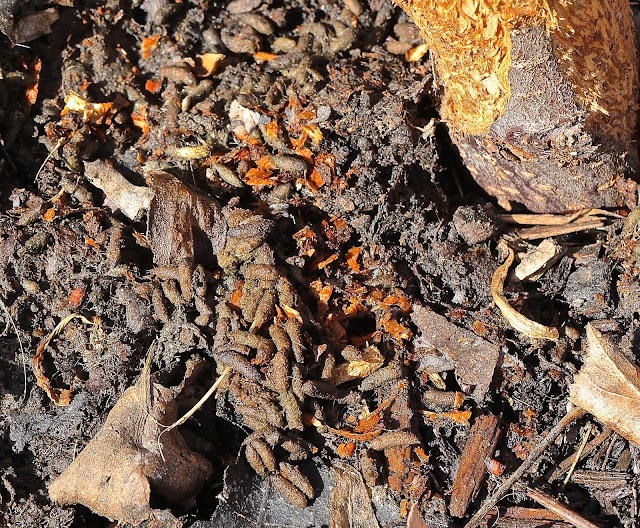Driving back from Windermere we spotted an adult grizzly walking along a path in the forest beside the highway. We slowed to a stop and watched as the bear continued down the path. We followed slowly on the shoulder and then stopped when the bear emerged from the forest and started to walk in the ditch. The bear disappeared from my view in the driver's seat but was still visible by Karen in the passenger seat.
"Karen, I can't see the bear anymore."
"Dad, the bear is right next to us."
A moment later the bear walked out of the ditch in front of the car,
nonchalantly ambled across the two-lane highway,
started to browse the dandelions by the roadside,
then continued to walk in the grass by the opposite side of the road.
We decided not to let the puppy out for a pee.























